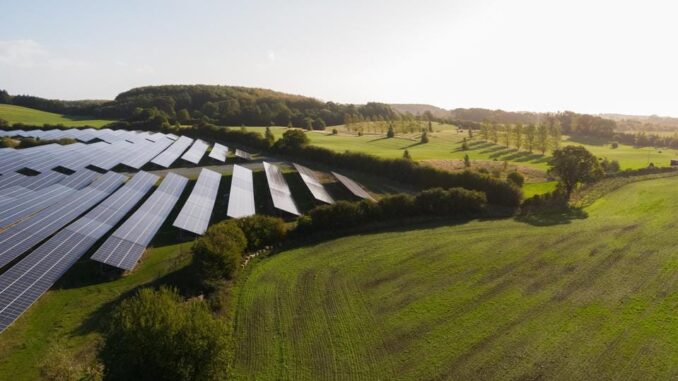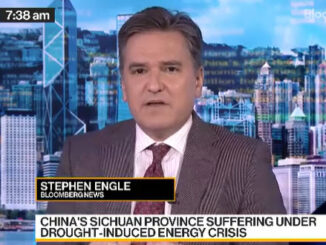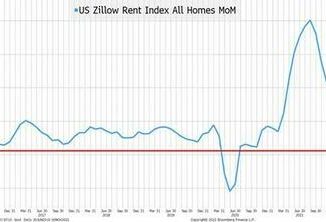
Exploding energy prices coupled with soaring inflation scourge the countries of the Northern Hemisphere on the cusp of winter. Russia’s invasion of Ukraine has laid bare the folly of European energy policy, which to win political headlines for the green transition, involved the creation of a fatally flawed energy deal with an authoritarian government. Energy independence has new urgency—power without negative externality.
Reducing harm to the environment as a business model has captured investors’ attention and is formalized in the Environmental, Social and Governance (ESG) concept, now a key performance indicator for companies. Yet the corporate maximization of ESG has led to “greenwashing”, deceptive marketing to create the illusion of goodness and to hide malpractice perpetuated by ESG practices and regulation.
Some energy entrepreneurs want to do better. The Future-Fit Business Benchmark is a management tool that provides clear, actionable guidance to perform without negatively impacting people, society and the planet, i.e. truly sustainable performance. The tool, developed by a UK-based non-profit, provides principles for understanding positive and regenerative impact. A leading practitioner of Future Fit is Better Energy, a solar power producer working across Denmark, Sweden, Finland, and Poland. It just announced an investment of more than €100 million from leading pension fund ATP which will take a 15 percent minority stake.
Why ESG is failing
Politicians, regulators, and business leaders often claim to be focused on sustainability. Yet, few fully appreciate the difference between being truly sustainable and just “less bad”. The traditional ESG metrics of CO2 emissions, energy consumption, etc. are used as proxies for sustainability progress, but often performance is merely incrementally improved and then celebrated as sustainability. This is not sustainable – it is just “less bad” performance, as the negative impact is still there.
Few things are as important for the energy transition as the electricity grid. An electricity system based 100% on renewables will bring new and significant challenges – but also possibilities – to grid operators, energy producers and energy consumers. The only way to solve the challenges and maximize the opportunities is by working together and by applying a systems view.
The first step is to close the investment gap in the power grid. Most electricity grids were built in and for the last century. Earlier this year, the US National Renewable Energy Laboratory estimated that a new grid could lead to up to $2.5 in benefits for every $1 dollar of transmission grid. A betterr power grid will facilitate the green transition and good business.
“We are facing three urgent crises in Europe: a climate crisis, a biodiversity crisis, and an energy crisis. At the core of all three lies an urgent and major transformation of Europe’s energy systems and we will have to live with the decisions we make now for many generations to come. We have a moral obligation to not only act fast, but also make change happen in the right way,” says Rasmus Lindholdt Kjær, CEO of Better Energy. For Lindholdt Kjær, just doing no harm is not enough. Restorative and regenerative efforts must form a fundamental part of regulation and business practices going forward. Regenerative practices must become “business as usual”.
Using Future Fit to create energy independence
No small undertaking, a restorative energy enterprise requires overcoming technological limitations, outdated infrastructure, lack of systems-thinking from business leaders and politicians, and short-termism. Nonetheless, powering companies, cities, and countries with clean, green energy is a business opportunity. Better Energy has installed capacity of more than 1 GWp and a pipeline of projects across its markets of more than 10 GWp. For clarification, gigawatt is expressed as GWh (production output from a particular plant in hours) and GWp (production capacity installed) – i.e. the expression of 1 GWp translates (x 1.000) to roughly more than 1 terawatt-hour (TWh) in production output. A terawatt-hour is a unit of energy equal to outputting one trillion watts for one hour, a value is large enough to express annual electricity generation for entire countries.
Better Energy innovates the field with its unique Power Purchase Agreement (PPA), a contract with corporate customers to supply legitimate, certified green energy. This helps global companies like Google, one the world’s leading energy consumers, run its data centers clean and green in Northern Europe. Better Energy has also inked deals with leading European telecom providers Telenor, Telia, and TDC, enterprises which not only brand themselves on green power, but consider green energy as an important long-term input to improve the economics of the business.
There are challenges to build and run solar parks, but Better Energy succeeds in part by engaging with local communities for local value creation, restoring nature on site, protecting groundwater, fostering biodiversity, and establishing recreational areas.
That solar energy can take root in place where sunlight is limited for half a year is itself an important innovation. Whereas the Danish wind industry has been seeded with significant government subsidy and proactive public policy support from some 50 years, Better Energy has taken no government subsidy to date and operates within a tax neutral framework. Overcoming the financial subterfuge used to game ESG metrics is a key differentiator enabled by Future Fit. Ensuring quality information for investors with transparency and disclosure of the financial model is the foundation for enterprise.




